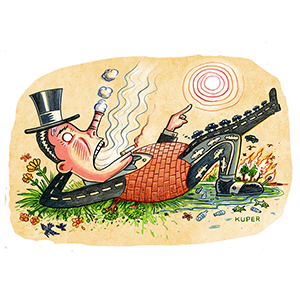Can our divided history bring us together?
As a late-blooming Civil War buff, I have mixed feelings about the recently renewed national push to remove Confederate monuments across the nation.
On one hand, the removal of hundreds of Confederate and related statues bears a troubling resemblance to efforts by Soviet dictator Josef Stalin or the Islamic State to selectively erase inconvenient history.
But when President Donald Trump decided to weigh in on the side of preserving public Confederate icons as "beautiful," my dilemma vanished. Trump managed to be for them in a way that turned me against them.
"Sorry to see the history and culture of our great country being ripped apart with the removal of our beautiful status and monuments," he wrote in a series of tweets. "You can't change history but you can learn from it. Robert E. Lee, Stonewall Jackson--who's next? Washington? Jefferson? So foolish! Also the beauty that is being taken out of our cities, towns and parks will be greatly missed and never able to be comparably replaced."
"Beauty" is in the eye of the beholder. For a man who claims to care about "history and culture," Trump conveniently mangles both.
In fact, no one is talking about ripping the nation apart, although Trump was doing an impressively good job of that.
Unlike the Confederacy's generals and politicians, for example, Washington and Jefferson didn't take up arms against the United States government and its people.
Statues that glorify Confederate leaders are themselves an attempt to distort history. Most Confederate monuments were built decades after the war by supporters of "the Lost Cause," a post-war movement to recast secession as a heroic struggle by slave states against impossible odds -- while minimizing the central role of slavery as the war's main cause.
President Trump knows something about distorting history. He launched his political career, let us not forget, by peddling bogus theories about President Barack Obama's birth certificate.
He also was not known to have cared much about preserving Confederate statues until a few days after a rally by white supremacists and neo-Nazis in support of a statue of Confederate general Robert E. Lee turned violent in Charlottesville, Va.
Suddenly, the Donald found a new way to pander to his mostly white political base. By fanning suspicions and resentments over how disrespected and dispossessed they are amid changing economic and cultural tides, Trump was willing to turn his historical "party of Abraham Lincoln" into the party of the Confederacy.
That cynical strategy appeared to be confirmed in a chilling way in surprisingly candid interviews given by Trump's chief strategist Stephen K. Bannon, before his departure abruptly was announced Friday. If Democrats want to fight over Confederate monuments and call Trump a bigot, Bannon said, that's a fight the president would win.
"I want them (the Democrats) to talk about racism every day," Bannon told the liberal American Prospect. "If the left is focused on race and identity, and we go with economic nationalism, we can crush the Democrats."
We'll see. Let's hope clearer heads prevail. The issue of which statues should stand or go should be left up to local governments, not Washington. On issues this sensitive, the closer decision-makers live to the communities effected by the decision, the better.
Statues and other war memorabilia don't have to be destroyed, in my view, just moved. I think a good model is Memento Park, an open-air museum to which enormous statues of Lenin, Marx and other memorabilia from Hungary's communist period are displayed in a pleasant, scenic and non-threatening environment.
We also need to distinguish and give even more attention to Confederate monuments that truly are aimed at memorializing history, not distorting it. My favorite example is the only Confederate memorial in Chicago, a 30-foot-high marker in the city's Oak Woods cemetery on the mass grave of more than 4,000 Confederate soldiers who died at Camp Douglas, a prisoner-of-war camp on the city's South Side lakefront.
I hadn't heard about Camp Douglas until my conservative column-writing colleague Patrick Buchanan told me about an ancestor of his who died as a prisoner there. Suddenly, despite our political differences, I felt more connected to Buchanan as a fellow product of American history, for better or worse.
The best history lessons are those that remind us Americans not only of our differences but also of what we share in common.
========
(E-mail Clarence Page at cpage@chicagotribune.com.)
(c) 2017 CLARENCE PAGE DISTRIBUTED BY TRIBUNE MEDIA SERVICES, INC.






